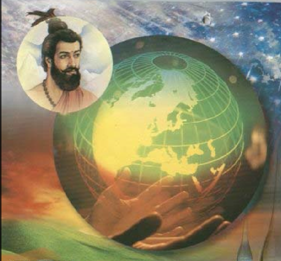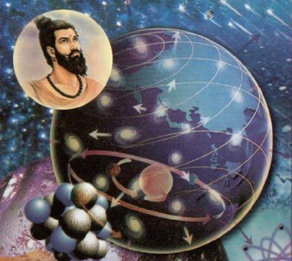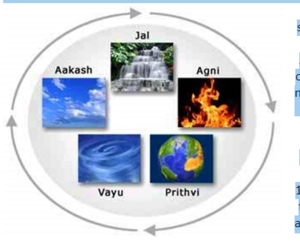Talk:Ṛṣi Kapilaḥ and Ṛṣi Kaṇādaḥ
By Vishal Agarwal
Two of the Vedic schools that explore both the nature of the universe and the nature of the Ātmā are the Sāṅkhya Darśana and the Vaiśeṣika Darśana, founded respectively by Ṛṣi Kapila and Ṛṣi Kaṇāda.
Ṛṣi Kapila taught that the universe consists of two fundamental realities—jīva-s (souls) and prakṛti (matter). These two are eternal and distinct; they can never transform into each other. Matter is constantly changing in form and properties, while the soul remains changeless. Life arises when prakṛti provides a form and function through which the jīva expresses consciousness. According to this philosophy, understanding both the structure of the universe and the nature of one’s own Ātmā is essential for liberation.
Ṛṣi Kapila also explained that certain forms of matter, such as air, have no definite shape. He and his disciples taught that the Ātmā undergoes repeated rebirths because it fails to realize its distinction from matter. When, through the discipline of yoga, one attains direct insight into the difference between Ātmā and prakṛti, one becomes liberated and no longer returns to the cycle of birth and death.
Ṛṣi Kaṇāda, founder of the Vaiśeṣika Darśana, proposed that all physical substances are composed of one or more of five basic elements: Ākāśa (space), Agni (energy or fire), Vāyu (air or gases), Āpaḥ (water or liquids), and Pṛthivī (earth or solids). Of these, the latter four consist of indivisible units known as paramāṇu-s (atoms). The Ātmā or soul, he explained, is distinct from matter and exists independently of it.
A few centuries later, the Greek philosopher Democritus (460–370 BCE) proposed a similar atomic theory. However, his ideas were rejected by the dominant religious systems of the time in the West. It was not until the early 19th century that John Dalton (1766–1844 CE) systematically developed the modern scientific theory of atoms. In contrast, the atomic principles of the Vaiśeṣika Darśana had been accepted and integrated within Hindu Dharm since very ancient times.
This harmony between metaphysical thought and scientific inquiry illustrates why there has historically been little conflict between Vedic philosophy and scientific discovery. While occasional disagreements do exist—such as those concerning jyotiṣa (astrology), which interprets celestial influences on human destiny—the broader Vedic worldview has long embraced the pursuit of knowledge, both spiritual and empirical, as complementary paths to truth.



